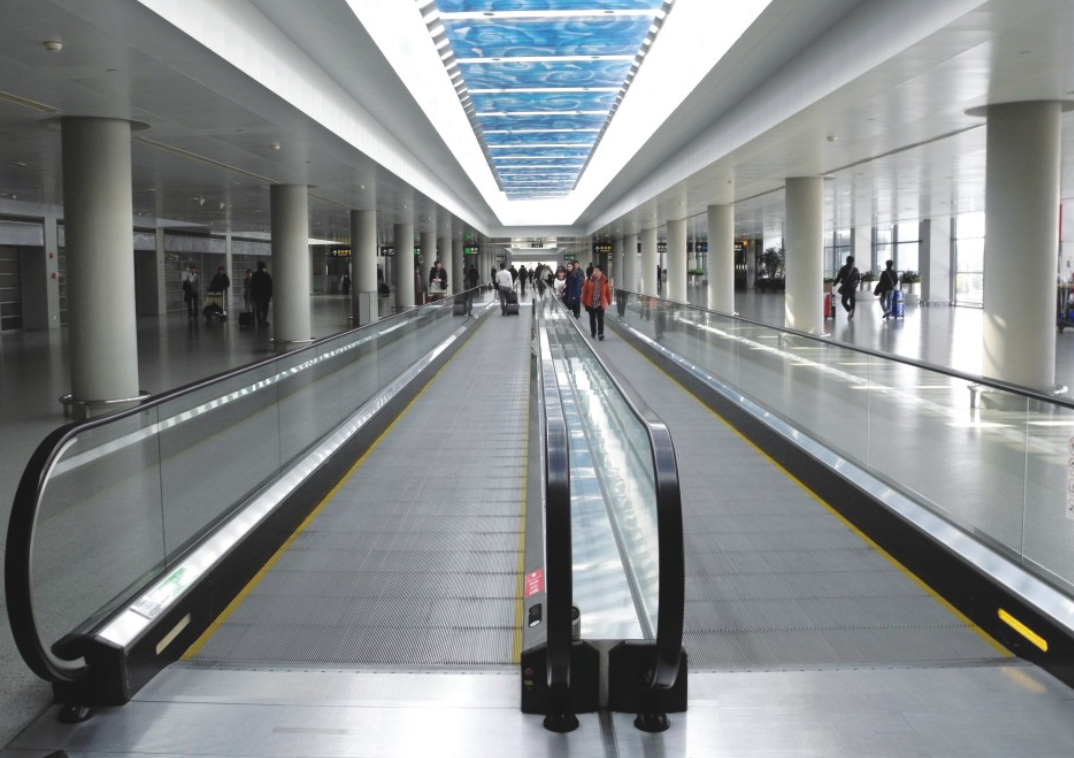The maintenance and durability of moving walkways in terms of shock and vibration resistance are critical to ensuring their long-term performance, safety, and reliability. Moving walkways are subjected to continuous foot traffic, weight loads, and environmental factors that can cause mechanical stress. Here's an in-depth look at how they are maintained to handle shock and vibration, and how these factors influence their durability:
Moving walkways are engineered with strong materials, including stainless steel and reinforced components, designed to absorb the vibrations and impacts from constant use. The mechanical structure, including the conveyor system, rollers, and motor housing, is built to reduce stress on individual components caused by vibrations or sudden shocks.
Some modern moving walkways incorporate vibration-damping materials or shock absorbers in the support structures, particularly in the joints and moving parts. These materials help to absorb and dissipate the energy from foot traffic and mechanical operation, reducing wear and tear.
Some moving walkways feature suspension systems that help mitigate the effects of constant foot traffic. These systems can adjust to minor imbalances and reduce vibrations, providing a smoother operation and prolonging the lifespan of critical parts like motors and belts.
Shock and vibration can cause wear over time in structural components like rollers, belts, and frame connections. Regular inspections are essential to detect any signs of loosening, wear, or misalignment in these parts. Components showing excessive wear are replaced to prevent further damage and ensure smooth operation.
Moving walkways must be perfectly aligned and leveled during installation and throughout their lifespan. Any misalignment or unlevel installation can exacerbate vibrations, leading to uneven stress on parts. Periodic checks of the walkway's alignment help maintain its structural integrity and reduce excessive vibrations.
Vibrations can cause bolts, fasteners, and joints to loosen over time. Regular tightening and securing of these components is crucial to maintaining the walkway's structural integrity and preventing excess movement that could lead to breakdowns.
The motor and gearbox are particularly vulnerable to wear from vibrations. Vibrations can cause misalignment or wear on the gears, leading to inefficiencies or failures. Maintenance teams regularly check for signs of wear in the motor and gearbox and may use specialized vibration-detection tools to monitor motor health.

Proper belt and chain tension is critical in minimizing vibration in moving walkways. Overly loose belts or chains can cause the system to vibrate excessively, while overly tight tension can stress the motor and bearings. Regular tension adjustments ensure smooth operation.
Regular lubrication of moving parts reduces friction, which in turn minimizes vibrations. Well-lubricated components like rollers, bearings, and chains experience less wear and can better handle the mechanical stress caused by vibrations. This reduces the risk of sudden failures due to shock-induced stress.
Shock and vibration increase the wear on key moving parts like rollers, bearings, and conveyor belts. The resistance of these parts to vibration-related stress is crucial for the walkway’s longevity. High-quality, durable materials are used to ensure that these components can withstand the repetitive impacts caused by vibrations.
Motors and gear systems are particularly sensitive to vibrations. Excessive vibrations can cause misalignment and fatigue in gears, bearings, and shafts, leading to premature failure. Walkways designed with good shock absorption and vibration damping help protect these sensitive components, prolonging their service life.
Passenger Experience and Structural Stability: Vibrations can also affect passenger comfort and safety. Over time, excessive vibrations can cause damage to the walkway’s structure, making it feel less stable or creating an uneven ride for users. By minimizing vibrations, the durability of the structural frame is preserved, and the overall user experience is improved.
Vibration resistance also impacts energy efficiency. When parts like rollers or belts experience excessive vibration, they may create additional friction or resistance, requiring more energy from the motor to maintain the walkway’s speed. Well-maintained systems with effective vibration control consume less energy and operate more efficiently.
Some modern moving walkways now feature vibration monitoring sensors that detect abnormal vibrations in real-time. These sensors alert maintenance teams when components begin to show signs of excessive wear due to vibration, allowing for proactive repairs before major issues develop.
The maintenance of moving walkways to ensure resistance to shock and vibration is a continuous process involving regular inspections, proper alignment, lubrication, and component replacement. Effective vibration resistance contributes directly to the durability of the system by protecting sensitive parts like motors, bearings, and belts from wear and tear. Incorporating vibration-damping materials and design features helps to absorb mechanical stress, ensuring smooth operation, longer lifespan, and greater energy efficiency. When properly maintained, moving walkways can operate reliably under heavy use for many years.











